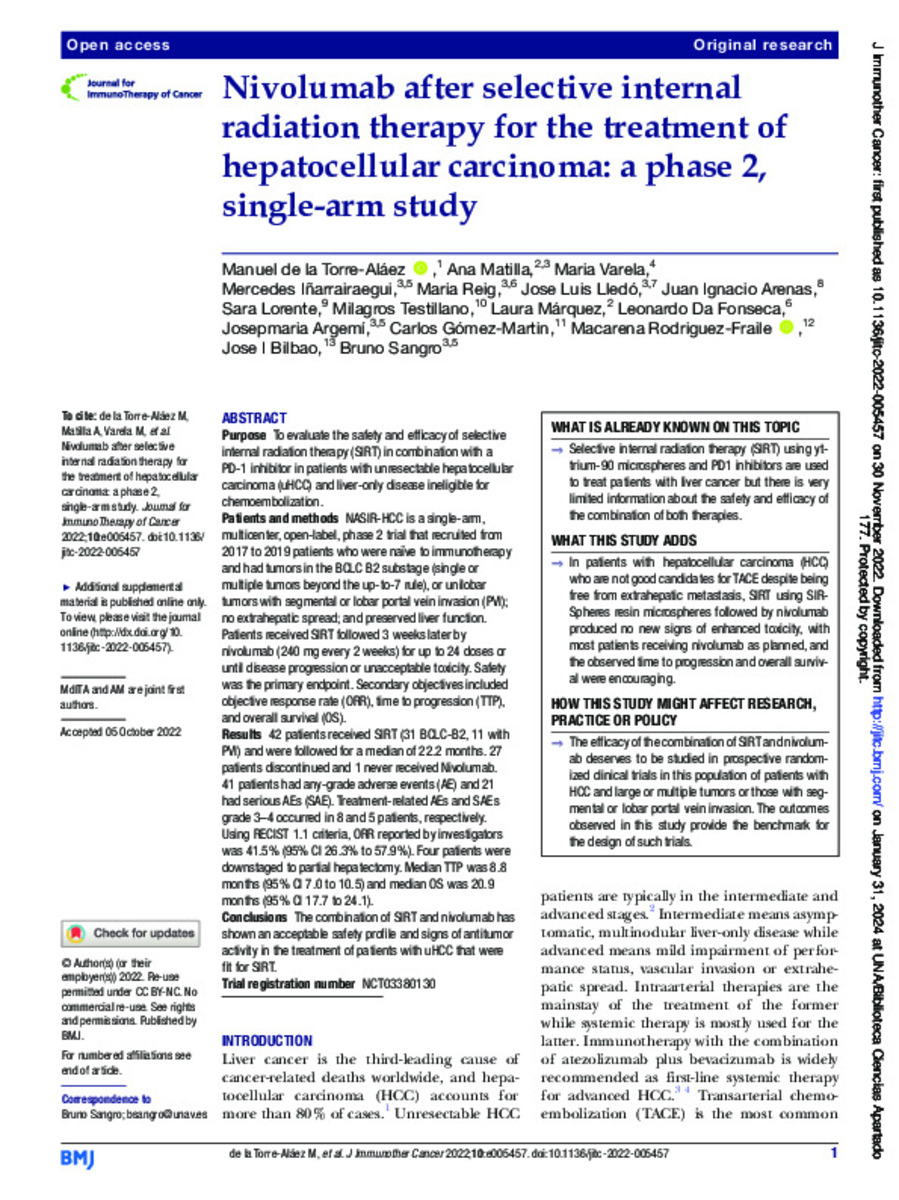Nivolumab after selective internal radiation therapy for the treatment of hepatocellular carcinoma: a phase 2, single-arm study
Keywords:
Cytotoxicity
Immunologic
Liver neoplasms
Programmed cell death 1 receptor
Radioimmunotherapy
Note:
This is an open access article distributed in accordance with the Creative Commons Attribution Non
Commercial (CC BY-NC 4.0) license, which permits others to distribute, remix, adapt, build upon this work non-commercially,
and license their derivative works on different terms, provided the original work is properly cited, appropriate credit is given,
any changes made indicated, and the use is non-commercial. See http://creativecommons.org/licenses/by-nc/4.0/.
Citation:
De-la-Torre-Aláez, M.A. (Manuel Antonio); Matilla, A. (Ana); Varela, M.R. (María Rosario); et al. "Nivolumab after selective internal radiation therapy for the treatment of hepatocellular carcinoma: a phase 2, single-arm study". Immunotherapy of cancer. 10 (11), 2022, e005457
Statistics and impact
0 citas en

0 citas en

Items in Dadun are protected by copyright, with all rights reserved, unless otherwise indicated.







